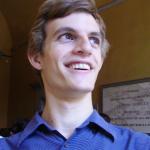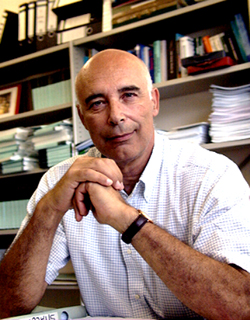EPS announces the 2015 prizes in the field of high energy physics.
Last month, the High Energy and Particle Physics division of the European Physical Society announced the 2015 prizes for outstanding contributions in the field of high energy physics.
The 2015 Young Experimental Physicist Prize was awarded to Jan Fiete Grosse-Oetringhaus and Giovanni Petrucciani, both working at CERN. In the official announcement issued by the EPS: “Jan Fiete has been awarded this year’s prize for his outstanding contribution to the investigation of particle collisions at the LHC through the analysis of jet quenching and multiparticle correlations in the ALICE Experiment, and Giovanni Petrucciani for his outstanding contributions to the optimisation of the tracking in the CMS detector, the Higgs boson discovery and the measurements of its properties.”
 Jan Fiete arrived at CERN as a summer student in 2003. He was an undergraduate student at the University of Munster and his first assignment at CERN was with Predrag Buncic on developing parts of the AliEn software. He is now CERN staff and has contributed to important discoveries made by ALICE. He participated in the direct observation of triangular flow (v3) in Pb-Pb collisions, already suggested by data from RHIC, clearly observed by ALICE in the 1% most central collisions. Furthermore, his analysis of p-Pb collisions revealed a double-ridge structure in high-multiplicity collisions. More studies are needed to understand what causes this structure, and physicists working in the field are looking forward to the next p-Pb collisions near the end of Run 2.
Jan Fiete arrived at CERN as a summer student in 2003. He was an undergraduate student at the University of Munster and his first assignment at CERN was with Predrag Buncic on developing parts of the AliEn software. He is now CERN staff and has contributed to important discoveries made by ALICE. He participated in the direct observation of triangular flow (v3) in Pb-Pb collisions, already suggested by data from RHIC, clearly observed by ALICE in the 1% most central collisions. Furthermore, his analysis of p-Pb collisions revealed a double-ridge structure in high-multiplicity collisions. More studies are needed to understand what causes this structure, and physicists working in the field are looking forward to the next p-Pb collisions near the end of Run 2.
 Giovanni Petrucciani, studied in Pisa, and got interested early in experimental particle physics when doing his bachelor thesis on an analysis of NA48 data. He later joined the CMS collaboration, at the time of his masters, and did all his research there, between Pisa, U. C. San Diego and CERN. He is interested in the fundamental aspects of particle physics, and devoted most of his research effort in Run 1 to the searches and studies of the Higgs boson. He has also always been intrigued by the challenges of trying to reconstruct and analyze data efficiently, either by trying to find smarter algorithms or by using better all the information available from the detector, and this motivated his work on track and event reconstruction, especially in the early years before the start of the data taking. He is looking forwards to Run 2, hoping that 13 TeV data will tell us more about the Higgs boson, and perhaps also give us some sign of new physics.
Giovanni Petrucciani, studied in Pisa, and got interested early in experimental particle physics when doing his bachelor thesis on an analysis of NA48 data. He later joined the CMS collaboration, at the time of his masters, and did all his research there, between Pisa, U. C. San Diego and CERN. He is interested in the fundamental aspects of particle physics, and devoted most of his research effort in Run 1 to the searches and studies of the Higgs boson. He has also always been intrigued by the challenges of trying to reconstruct and analyze data efficiently, either by trying to find smarter algorithms or by using better all the information available from the detector, and this motivated his work on track and event reconstruction, especially in the early years before the start of the data taking. He is looking forwards to Run 2, hoping that 13 TeV data will tell us more about the Higgs boson, and perhaps also give us some sign of new physics.
 Finally, congratulations to Guido Altarelli who was presented with the 2015 High Energy and Particle Physics Prize jointly with Yuri L. Dokshitzer, Lev Lipatov, and Giorgio Parisi for "developing a probabilistic field theory framework for the dynamics of quarks and gluons, enabling a quantitative understanding of high-energy collisions involving hadrons". The award is given every two years, to honour members of the HEP community for an outstanding contribution in an experimental, theoretical or technological area.
Finally, congratulations to Guido Altarelli who was presented with the 2015 High Energy and Particle Physics Prize jointly with Yuri L. Dokshitzer, Lev Lipatov, and Giorgio Parisi for "developing a probabilistic field theory framework for the dynamics of quarks and gluons, enabling a quantitative understanding of high-energy collisions involving hadrons". The award is given every two years, to honour members of the HEP community for an outstanding contribution in an experimental, theoretical or technological area.
We hope you will join us to congratulate them for the prestigious distinctions that reflect the importance of the field of high-energy physics for the European Physics Society and share our wishes for the best of success in their research.
